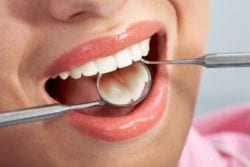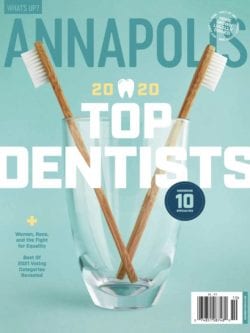Dental Fillings An Overview

As we age, our teeth can lose enamel and become chipped, cracked and damaged over time. This will eventually compromise the integrity of tooth structure, leaving them more vulnerable to breaking or requiring extraction to protect overall oral health.
Modern dentistry, and the wide variety of dental procedures available today, can support long term dental health by strengthening teeth and restoring your bite.
Annapolis dentists Lee, Bonfiglio, Vesely & Associates has the education and expertise, gained through experience, to offer their patients a plan of treatment designed to maintain the natural teeth and enhance a patient’s smile.
Porcelain veneers, dental crowns, tooth bonding and cosmetic fillings are some of the options that can not only improve the appearance of a patient’s smile, but also support long term dental health.
We offer a variety of tooth fillings in our Annapolis dental office including porcelain inlays/onlays and white resin dental fillings. Tooth colored restorations help to protect teeth while maintaining natural beauty.
What’s the Best Tooth Filling For Me?
There are basically three types of dental fillings: bonded white resin fillings, porcelain inlays and onlays, and cast-gold fillings. Your dentist will evaluate your condition and help you choose which is best for you. A filling should remain in place for many years, protecting your teeth without you ever noticing it’s there.
Composite Resin Filling
Composite resin fillings are more aesthetically pleasing since they are tooth colored and will blend in with your surrounding natural teeth. In most cases, very little tooth structure needs to be removed to install a composite resin filling which means there will be less drilling and more of the tooth will be preserved.
Though they are not as long-lasting as other types of fillings, composite fillings will last many years or more with proper care and maintenance.
Porcelain Inlays & Onlays
This type of tooth filling is used to restore a tooth with more advanced tooth decay. If large areas of the tooth have been damaged by decay, or if the decay is in a deep crevice of a tooth, and inlay or onlay is a more conservative treatment than a tooth extraction. This type of restoration is like creating the missing puzzle piece from the damaged tooth.
The porcelain material used is extremely durable. When properly fit, placed, and cared for, a porcelain inlay or onlay can last for decades.
Gold Fillings
A gold filling can last 15-30 years and will not corrode. While gold fillings are often the most expensive choice, many consider it the best filling material. Gold inlays are well-tolerated by gum tissues and do not cause damage to the surrounding teeth.
Dental fillings can be used to:
- Repair damage caused by tooth decay
- Replace tooth structure that has chipped or broken off
- Improve the appearance of a defect on the surface of a tooth

